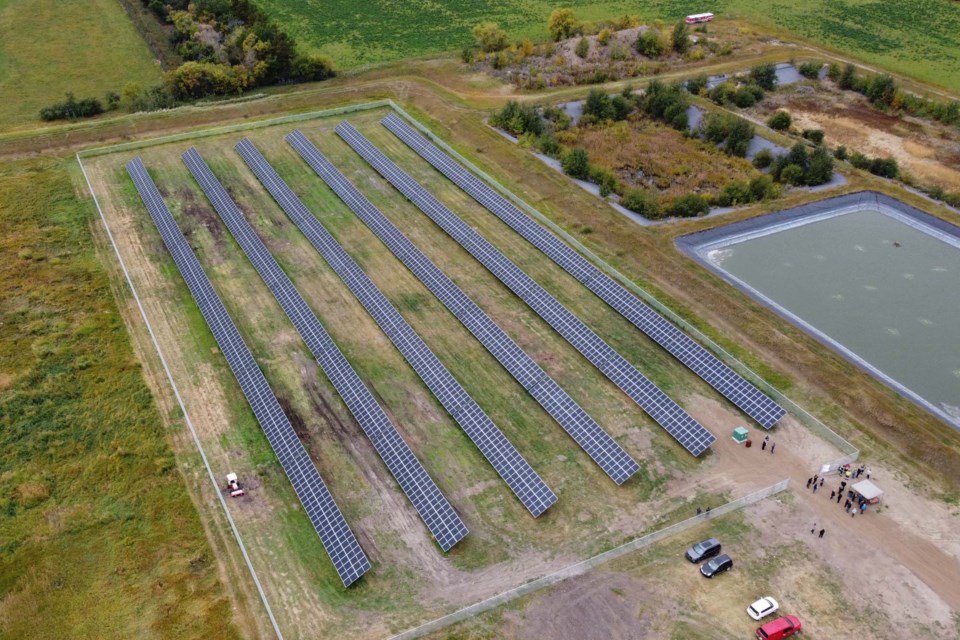A St. Albert city councillor hopes some $10 billion in federal investment will accelerate Canada’s transit systems toward a green future.
Prime Minister Justin Trudeau announced Oct. 1 the federal government would invest $10 billion into green infrastructure through the Canada Infrastructure Bank in the next three years.
The cash is part of a 12-year $180-billion infrastructure plan announced last August.
The Canada Infrastructure Bank is a crown corporation that aims to provide loans and other support to other levels of government to attract private investment.
Trudeau said the bank’s investments should create about 60,000 jobs nation-wide.
“With smart, targeted investments, we can get people back on the job and grow the economy while building a healthy, sustainable future for everyone.”
The investments would target green infrastructure, with $2.5 billion for renewable power generation, transmission, and storage; $2 billion for large-scale energy efficiency building retrofits; and $1.5 billion for zero-emission buses and charging infrastructure. There is also $2 billion to connect about 750,000 homes and businesses to broadband in underserved communities, $1.5 billion for irrigation projects, and $500 million for project development.
St. Albert-Edmonton Conservative MP Michael Cooper questioned the Liberal government’s ability to get this money out the door, noting that the infrastructure bank had funded just nine projects since it was founded in 2017, none of which had been completed.
“It’s nice to make the announcement, but where are the results?”
Cooper said the infrastructure bank was a complete failure, and his party would abolish it and find more effective ways to get cash to the provinces if they took power.
Cautious optimism
St. Albert Coun. Wes Brodhead said this announcement could be an opportunity for St. Albert, and noted infrastructure bank officials recently called him to talk about potential investments in this region’s transit systems. (Brodhead is the chair of the proposed Edmonton regional transit service commission.)
“The operating case for electric buses versus diesel is compelling,” Brodhead said, with St. Albert Transit staff estimating that electric ones cost about 47 per cent less to run per kilometre.
Brodhead said investing in mass transit makes sense, as it is an economic multiplier that gets people to work for less money, less pollution and less traffic congestion than having everyone drive cars. St. Albert has about seven zero-emission electric buses in its fleet and hopes to convert its whole fleet to electric.
Brodhead said this $2-billion investment would help more communities cover the higher up-front cost of electric vehicles and speed their journey toward zero-emission transit.
In a press release, Sara Petrevan, policy director at Clean Energy Canada (an environmental think-tank based out of Simon Fraser University) said this $10-billion investment would support Canada’s four electric bus manufacturers, create jobs, save energy and green the nation’s power grid.
“At a time when some of the world’s biggest banks and financial institutions are putting climate at the forefront of their recovery efforts, it’s vital that Canada does the same. The Infrastructure Bank’s new plan will help build a more competitive and resilient economy – creating jobs for Canadians while tackling climate change.”
Leigh Bond of PACE Alberta, a group that promotes Property Assessed Clean Energy laws to help people make their homes more energy efficient, echoed Cooper’s concerns about the infrastructure bank and said the government should have put more of this $10 billion toward energy efficiency.
“Energy efficiency is the best thing to invest in,” Bond said, as it is easier and cheaper to implement than renewable energy or electric buses. More efficient buildings also reduced your need to invest in renewable power.
While this cash could speed energy retrofits along, Bond said it barely scratches the surface in terms of what is needed – he estimates there are at least $3.6 billion of potential retrofits to be done in Edmonton alone.
“It’s a good idea, but the devil is in the implementation,” Bond said.
Details on the investment plans can be found at bit.ly/3n66v42.




